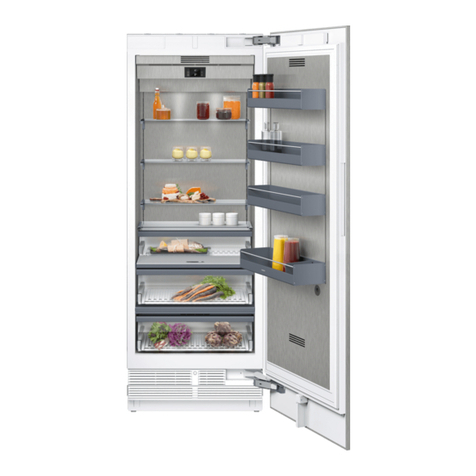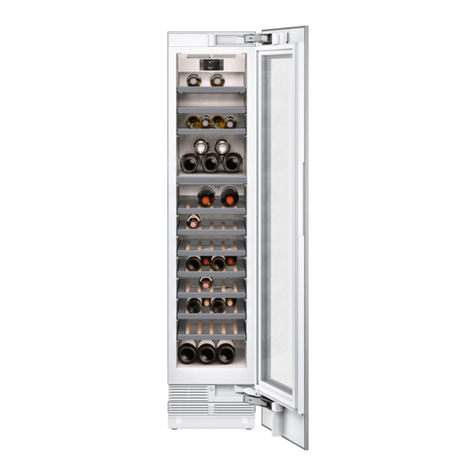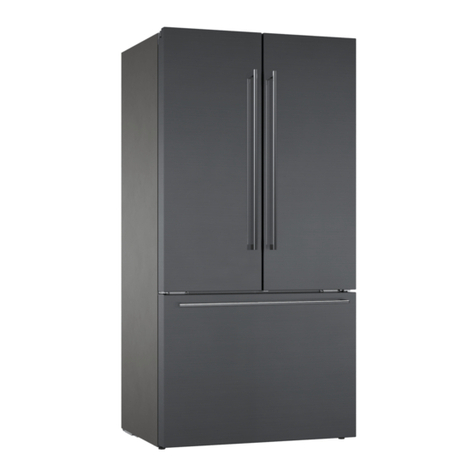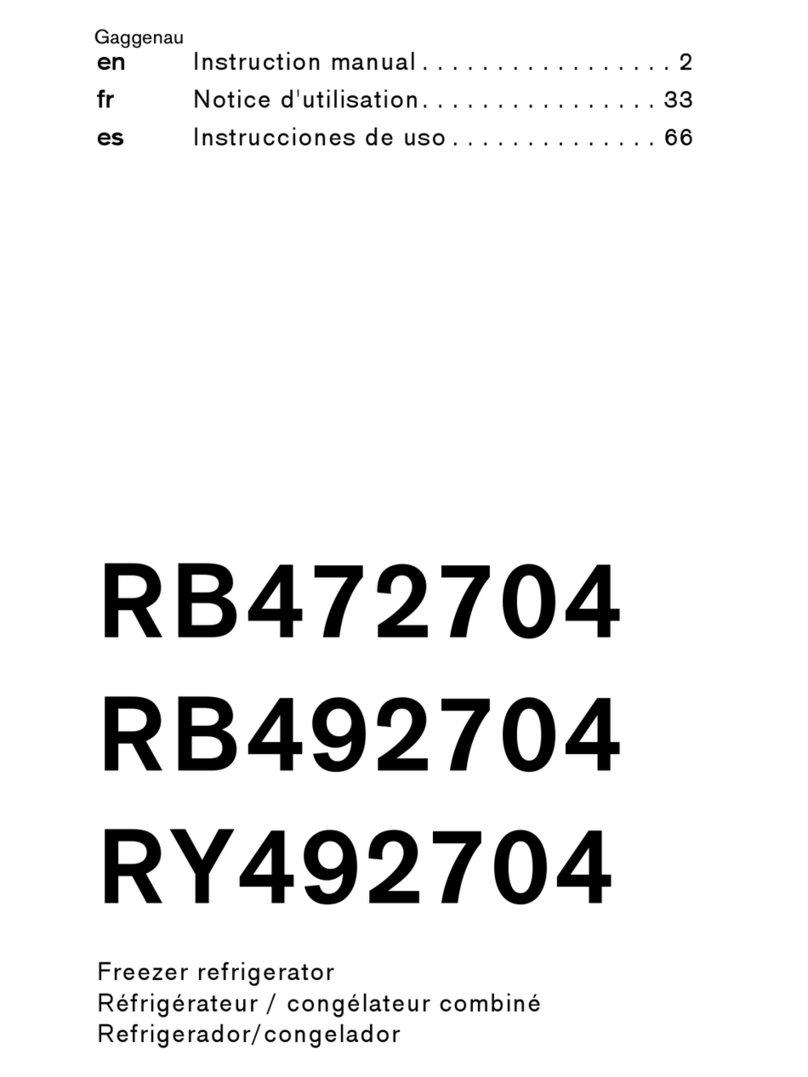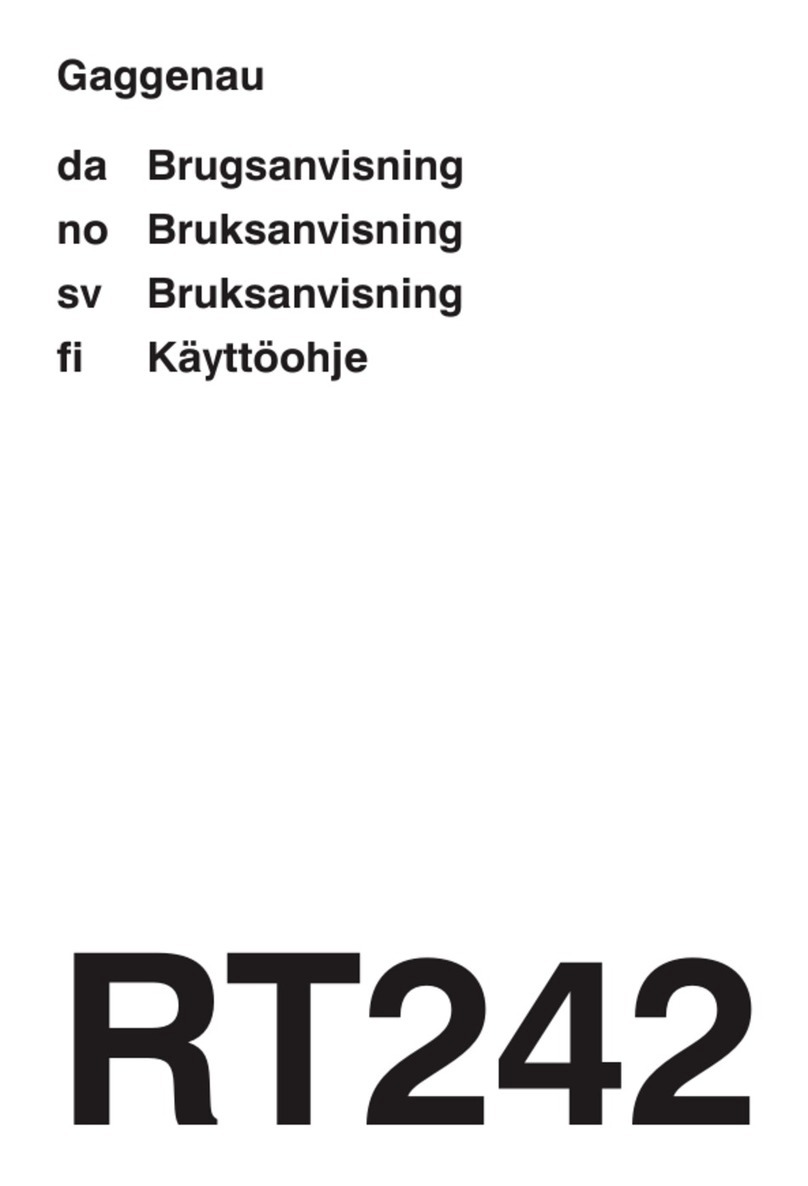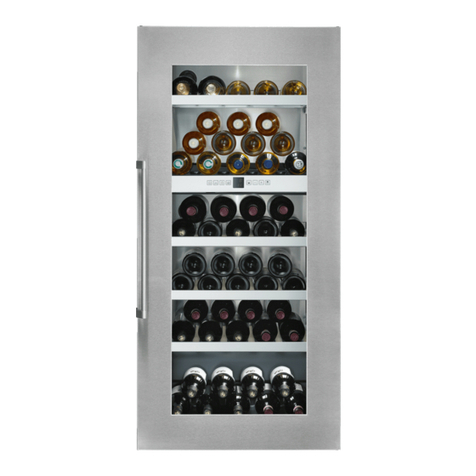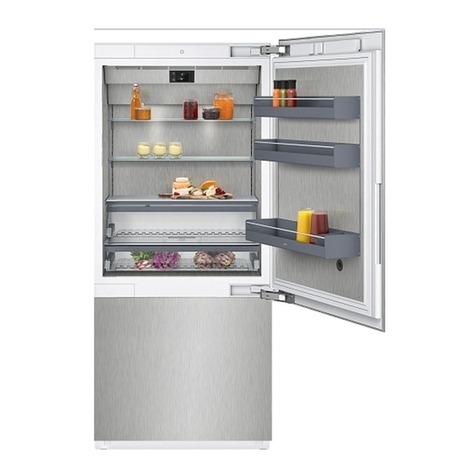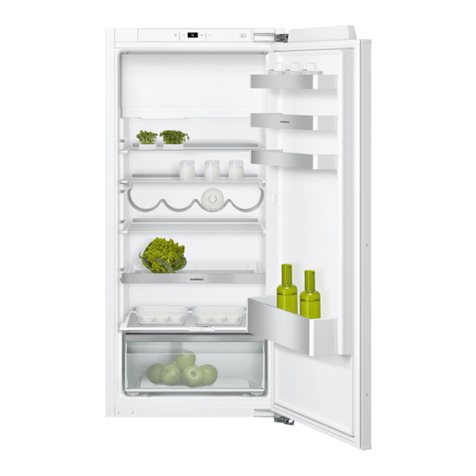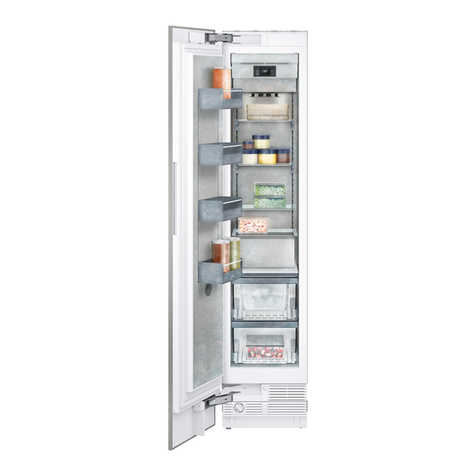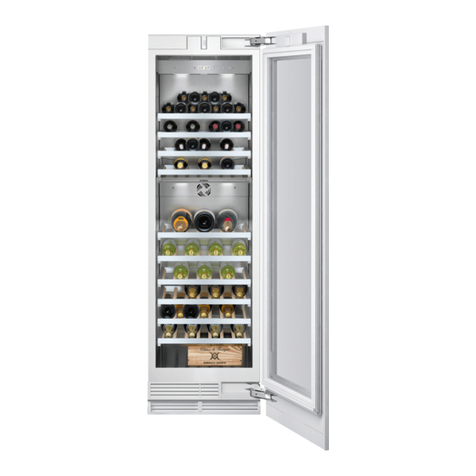6
Transporting the appliance
!Warning!
The appliance is very heavy. Transport the appliance
withgreat care, otherwise persons could be injured
or the appliance could be damaged.
Transport the appliance using a transport tool
appropriate to the installationlocationand appliance (lift
truck or dolly).
Transport the packaged appliance onthe wooden
palette as near as possible to the installationlocation.
Secure the appliance against tipping over during
transport.
If the building prevents the appliance from being
transported vertically, it is possible to transport it
horizontally instead. To install the appliance, the room
must be at least 221cm high. Following installation,
there must be a minimum waiting period of ½ hour
before the master switchis switched on.
The castors are provided solely to help assembly. The
appliance may be moved a maximum of 4 m onthe
castors.
The appliance must not be moved along unevenor soft
floors onits castors.
It is not permitted to transport the unpacked appliance
unless the anti−tip stabiliser has beenfitted and the
appliance has beencompletely cleared out.
Transporting previously installed
appliances
1. Clear out the appliance completely. Only move the
appliance whenit is completely empty.
2. Remove all kitchenunit doors.
3. Fit the anti−tip stabiliser.
4. Remove all fixtures and fittings from the installation
niche and wall.
5. Secure the appliance doors against inadvertent
opening.
6. Pull the appliance carefully out of the installation
niche. The appliance may be moved a maximum of
4 m onthe castors.
Electricalconnection
Do not use any extensioncables or distributors. A
permanently installed socket is required for connecting
this appliance to the mains.
Any necessary extensionto the power cord must only be
carried out by a qualified electrician.
The socket for connecting the appliance to the mains
must be freely accessible. Connect theappliance to a
correctly installed socket providing 220−240V/50Hz
alternating current. The socket must be protected by a
fuse witha rating of 10 A to 16 A or higher.
Inthe case of appliances operated outside Europe, the
voltage and type of current onthe rating plate must
conform to the values of the local electricity grid. The
appliance must not be operated if the voltage or type of
current does not conform. Any necessary replacement
of the power cord must only be carried out by a qualified
electrician.
!Warning!
The appliance must not be connected to an
electronic energy saving plug or aninverter that
converts direct current to 230 V alternating current
(e.g. solar energy systems, boat electrical systems).
Location of the powersocket
The socket canbe located to the right or left of the
appliance.
To enable the electrical safety test to be carried out, the
socket must be freely accessible and must not be
located behind the appliance.



